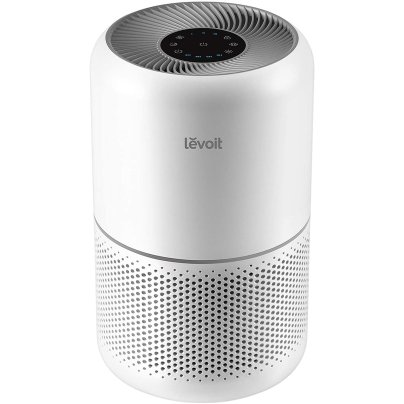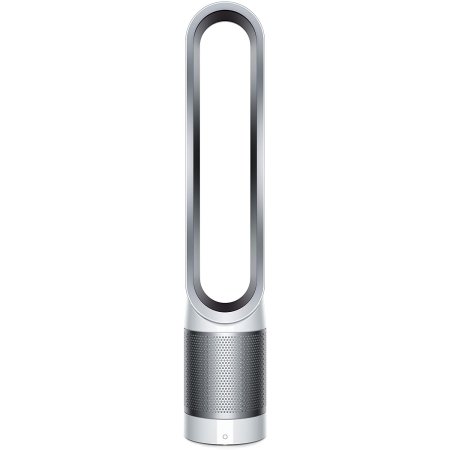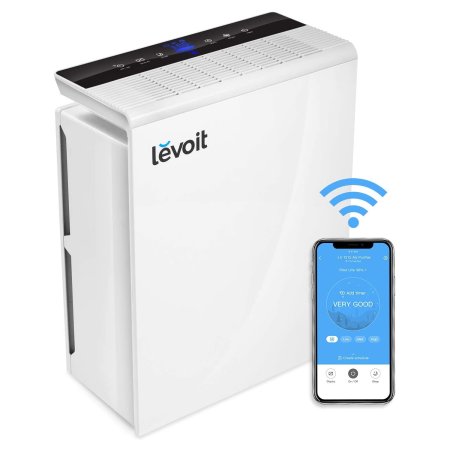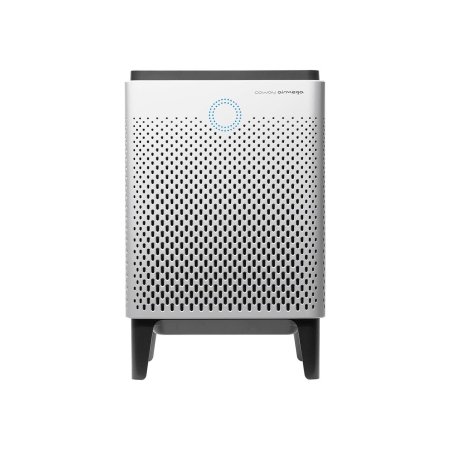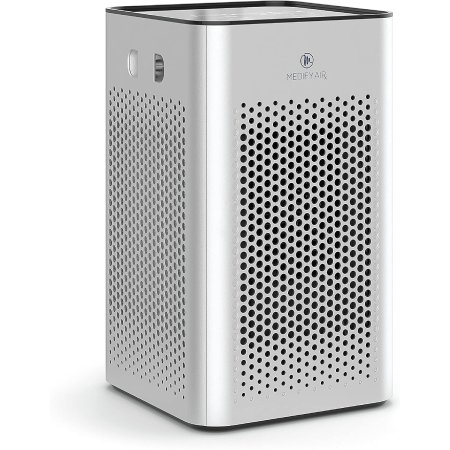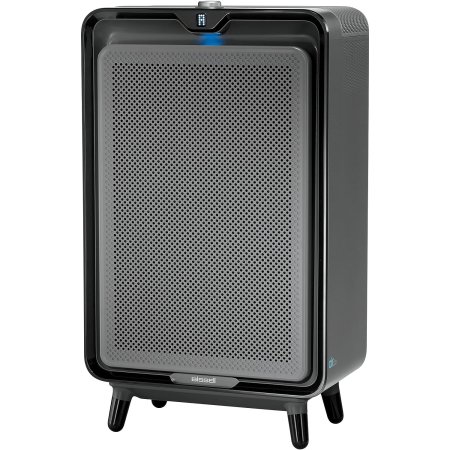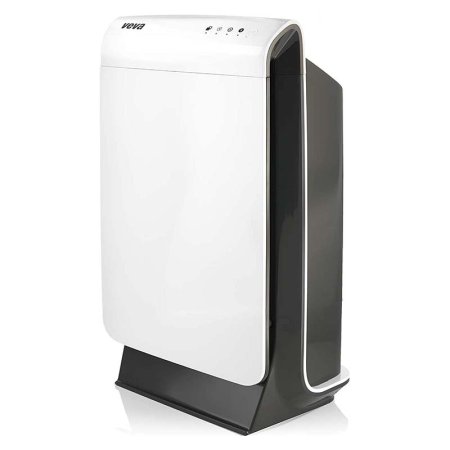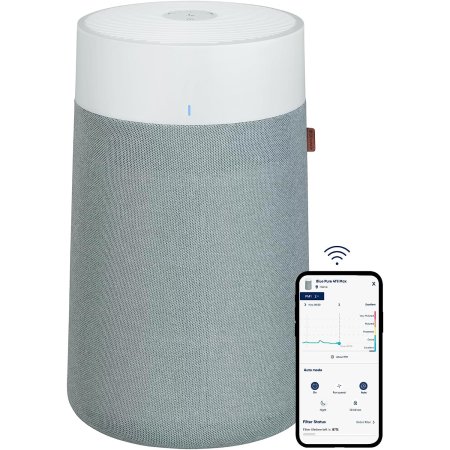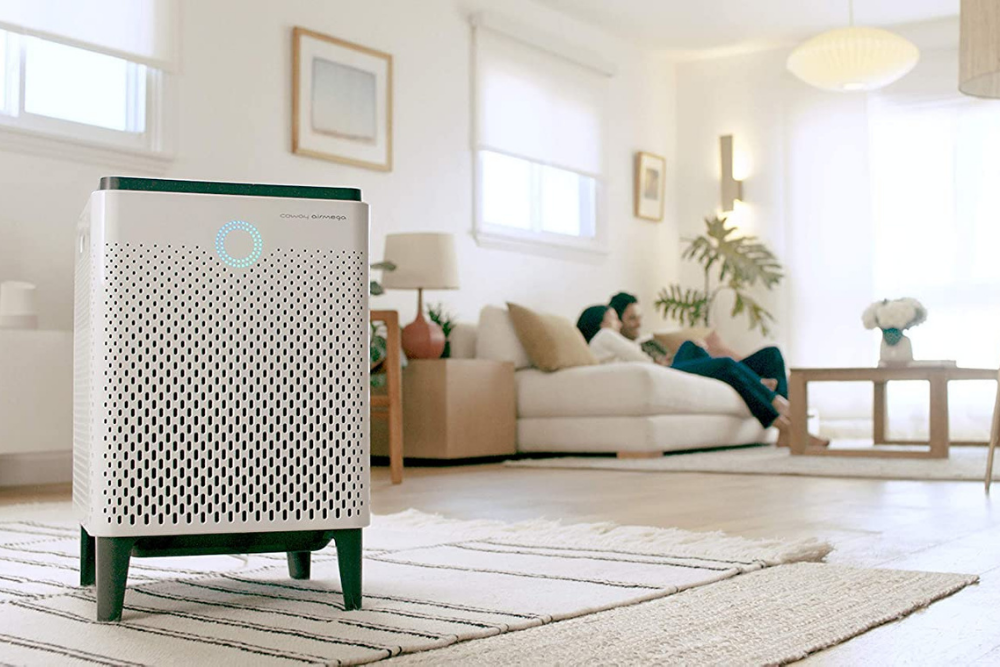
We may earn revenue from the products available on this page and participate in affiliate programs. Learn More ›

Early Black Friday Sale Happening Now!
Our favorite air purifier for mold, the Levoit Core 300 Air Purifier, is on sale for $78.99 (Save $21) during Amazon’s Early Black Friday Sale. This Energy-Star certified compact air purifier fits just about anywhere and filters irritants at an impressively quiet 24 dB.
Our Best Bang pick, the Levoit Core 200S Smart True HEPA Air Purifier, is an even better deal this week at just $69.99 (Save $20) during Amazon’s Early Black Friday Sale. A true HEPA air purifier, this unit is packed with convenient features at an affordable price, including smart technology that allows control from the VeSync app.
Hurry! These deals won’t last long!
Mold isn’t only unsightly; it can make a home smell unpleasant and, at worst, trigger health issues. Only air purifiers can tackle air quality when mold is a concern. Air purifiers remove airborne contaminants to improve indoor air quality. A portable unit can filter dust, pet dander, smoke, pollen, mold spores, and other small particles.
While a good air purifier can filter airborne mold spores, it’s important to tackle mold at the source. Even the best air purifier for mold will not fix the root cause of the mold. The best air purifiers for mold use high-efficiency particulate air (HEPA) filtration to remove mold spores, pollutants, and allergens for cleaner indoor air.
- BEST OVERALL: Levoit Core 300 Air Purifier
- BEST BANG FOR THE BUCK: Levoit Core 200S Smart True HEPA Air Purifier
- UPGRADE PICK: Dyson Pure Cool Link Tower TP02 Purifier Fan
- BEST SMART TECH: Levoit LV-PUR131S Smart True HEPA Air Purifier
- BEST ODOR CONTROL: GermGuardian AC5900WCA True HEPA Filter Air Purifier
- BEST FOR ALLERGIES: Honeywell True HEPA Air Purifier
- BEST FOR LARGE ROOMS: Coway Airmega 400S Smart Air Purifier
- BEST FOR SMALL ROOMS: GermGuardian AC4825E 4-in-1 Air Purifier
- BEST FOR BEDROOMS: Medify MA-25 Air Purifier With HEPA H13 Filter
- BEST FOR BASEMENTS: Bissell air220 Smart Purifier With HEPA Filter
- BEST WITH WASHABLE FILTER: Veva Large Room ProHEPA 9000 Premium Air Purifier
- BEST FOR ODOR: Blueair Blue Pure 411i Max Air Purifier

How We Chose the Best Air Purifiers for Mold
Removing mold spores, odors, and noxious particles from the air in a home provides comfort and peace of mind. Selections for the best air purifier for mold depended upon their filtration type, noise level, square footage covered, ease of use, and portability.
When it comes to a quality air purifier for mold, the above units are all great options for small or large spaces with many picks including multilayered filtration. The HEPA filters, prefilters, UV-light filtration, and activated carbon filters included aid in removing odor, particles, pet dander, and allergens from a home. Plus, many of these units run at low noise levels or include sleep modes for silent operation at night.
As for the square footage covered, all the air purifiers listed above can purify 160 to 1,650 square feet based on the size of a home or room. Depending upon the size of the unit required, these air purifiers are light enough to move wherever necessary. Finally, some of these purifiers are also smart-home compatible, come with simple control panels, or can be adjusted with a remote control.
Our Top Picks
A quality air purifier for mold uses effective and safe HEPA filtration to trap airborne mold spores. Look for a unit with a clean air delivery rate (CADR) to suit the room size where the purifier will be used. Mold air purifiers should also have a stylish, functional design since these devices are usually on display within the home.
Best Overall
Levoit Core 300 Air Purifier
Pros
- 3 airspeed settings to adjust airflow, exchange rate, and decibel level
- Energy Star certified to prevent air purification from skyrocketing the electric bill
- Easy-to-use display makes controlling the device and understanding current air quality easy
- Comes in 2 colorways to match a variety of decor styles and color palettes
- Compact air purifier; will not take up a lot of space in a room
Cons
- Limited portability; this mold air purifier is not suitable for large rooms
The Levoit Core 300 is an affordable true HEPA air purifier. This air cleaner has a simple design and an easy-to-use display that controls a range of features. For nighttime, the Core 300 has a silent mode that runs at 24 decibels for quiet operation. The display also controls the three fan speed settings, timer settings, and filter indicator.
This unit has three stages of filtration. A prefilter and a true HEPA filter trap particles. An activated carbon filter nabs odors and other pollutants. This purifier features Levoit’s Vortexair Technology to create a stronger airflow while keeping the purifier compact. This design allows this purifier to change the air up to five times per hour in rooms up to 219 square feet, ensuring a constant change of cleaner air. This affordable and sophisticated air purifier for mold is Energy Star certified for efficient operation.
Product Specs
- Filtration: Prefilter, activated carbon filter, and HEPA filter
- Room size recommendation: 219 square feet
- Noise level: 24 decibels
Get the Levoit Core 300 air purifier for mold at Amazon, Walmart, or Target.
Best Bang for the Buck
Levoit Core 200S Smart True HEPA Air Purifier
Pros
- Smart-home compatibility allows users to control the device from an app
- Compact mold air purifier fits in tighter environments like offices or apartments easily
- Sleep-mode feature allows you to lower the audible noise to just 24 decibels for uninterrupted sleep
- 1-touch control for quick and simple setup and activation
Cons
- Limited portability; meant for small to medium-size rooms of up to 183 square feet
The Levoit Core 200S has smart capabilities and a range of convenient features at an affordable price. This mold air purifier is a compact but powerful unit for small rooms. The Core 200S includes a nylon prefilter, a true HEPA filter, and an activated-carbon filter to clean particles and odors from the air. This unit features a clean design and a small footprint and has a CADR suitable for rooms up to 183 square feet.
For nighttime, the purifier has a sleep-mode option, which runs at a quiet 24 decibels. There is also the option to turn on an ambient night light or turn off the display entirely for complete darkness.
To use the purifier, use the one-touch control or connect the purifier to the VeSync app for remote control. The app can be used to set timers, schedule on and off times, monitor filter life, and adjust settings. This smart purifier can also connect to Amazon Alexa or Google Assistant.
Product Specs
- Filtration: HEPA filter, activated carbon filter, and nylon pre-filter
- Room size recommendation: 183 square feet
- Noise level: 24 decibels
Get the Levoit Core 200S air purifier for mold at Amazon, Walmart, or Target.
Upgrade Pick
Dyson Pure Cool Link Tower TP02 Purifier Fan
Pros
- 10 airspeed settings for customizable air exchange rates and comfort
- Air purifier and fan operations help with mold removal while improving air quality and comfort on hot days
- Remote controlled for easy adjustment from across the room in an office or living room
- Lightweight means moving it from the living room to a bedroom is a breeze
Cons
- Some users say that the filter has a short lifespan, lasting around 7 months
- Expensive compared to other similar air purifiers on the market
Dyson is known for its high-performance products, and the Pure Cool Link TP02 air purifying fan is no exception. This modern-looking air purifier has a true HEPA filter for mold removal, allergen reduction, and other particles. An activated carbon layer captures odors and volatile organic compounds (VOCs).
This unit also doubles as a fan in hot weather with the oscillating tower fan option. Since the unit has no spinning blades, it has a sleek look and is safe for households with children and pets.
This smart purifier can connect to the Dyson Link app and Amazon Echo for remote control. The Pure Cool Link TP02 has several convenient features, including real-time air quality reports, quiet nighttime mode, a sleep timer, and 10 airspeed settings. An auto-mode setting intelligently monitors and reacts to real-time air quality to adjust the purifier as needed.
Product Specs
- Filtration: HEPA filter and activated carbon filter
- Room size recommendation: Unspecified
- Noise level: Unspecified
Get the Dyson air purifier for mold at Amazon or Walmart.
Best Smart Tech
Levoit LV-PUR131S Smart True HEPA Air Purifier
Pros
- Smart-home compatible, allowing users to control the device with voice or an app
- 3 built-in operating speeds for customizable air rates and sound levels
- The app allows users to monitor air quality actively even when they aren’t home
Cons
- Not meant for large spaces; replacement air purifier filters are expensive and sold separately
This smart air purifier can connect to Levoit’s VeSync app for remote control or to Amazon Alexa or Google Home for hands-free control. It also features a three-step filtering process, which includes a prefilter, true HEPA filter, and activated carbon filter.
The app allows users to view and toggle through a range of convenient features remotely. These features can also be controlled by the display on the unit. One feature is the real-time air quality indicator and auto mode. The auto mode adjusts the purifier for a consistent, clean-air delivery rate among three fan settings in response to real-time air quality. Other features include a display-off button, sleep mode, and a timer option.
This larger unit also offers better filtration for larger rooms. The CADR allows this Levoit purifier to filter the air 4.5 times per hour in rooms up to 360 square feet. The powerful fan is efficient but quiet, running at 27 decibels on the lowest setting.
Product Specs
- Filtration: Activated-carbon filter and HEPA filter
- Room size recommendation: 360 square feet
- Noise level: 27 decibels
Get the Levoit LV-PUR131S air purifier for mold at The Home Depot, Amazon, or Target.
Best Odor Control
GermGuardian AC5900WCA True HEPA Filter Air Purifier
Pros
- 3-step filtration for large particles, odor, and mold removal from the air
- Optional UV-light air filter can help fight bacteria and illnesses with the space
- 3 airspeed settings for customizable airflow and noise levels
Cons
- Limited portability; expensive compared to similar air purifiers on the market
- Some users say this unit is pretty loud and isn’t very powerful
The AC5900WCA true HEPA purifier from Guardian Technologies features an activated charcoal filter and ultraviolet-C (UV-C) light option. The three-step filter includes a prefilter, a true HEPA filter, and an activated-charcoal filter. The activated-charcoal layer can help reduce odors from pets, cooking, smoke, and other daily household activities. The optional UV-C light feature helps kill airborne viruses.
This unit filters air four times an hour in rooms up to 365 square feet. The larger capacity makes this unit an ideal option for kitchens, a major source of household smells. The small rectangular unit has a very basic and unobtrusive design. A simple button display has an air filter change indicator light, UV-C light control, timer setting, and three speed settings.
Product Specs
- Filtration: HEPA filter, activated carbon filter, UV-C light filter
- Room size recommendation: 365 square feet
- Noise level: Unspecified
Get the GermGuardian AC5900WCA air purifier for mold at Amazon, The Home Depot, Walmart, Target, or Guardian Technologies.
Best for Allergies
Honeywell True HEPA Air Purifier
Pros
- Has a touch control panel and offers 4 cleaning levels
- Filters dust, pet dander, pollen, and mold spores, filtering air roughly 5 times per hour
Cons
- Some users say that this air purifier’s buttons have stopped working after moderate use
- Replacement HEPA and prefilters for this air purifier are expensive
This allergen plus HEPA air purifier from Honeywell is a powerful model from a well-known brand. The true HEPA filter in this purifier captures a wide range of allergens, including pet dander, dust, dust mite debris, pollen, and mold spores. This unit is Energy Star certified and has a high CADR rating. It can circulate and filter air every 12.5 minutes in rooms that are up to 465 square feet; the high air turnover means this unit can capture more allergens.
This air purifier features four cleaning levels: Germ, General Cleaning, Allergen, and Turbo. The cleaning levels adjust the fan speed to suit each function. This unit’s touch control panel also features a filter-change indicator, timer options, and a control panel dimmer.
Product Specs
- Filtration: HEPA filter
- Room size recommendation: 465 square feet
- Noise level: Unspecified
Get the Honeywell air purifier for mold at Amazon, Lowe’s, Walmart, or Honeywell.
Best for Large Rooms
Coway Airmega 400S Smart Air Purifier
Pros
- Air quality Smart Mode sensor automatically adjusts the unit’s air purification level
- Energy Star certification means mold removal won’t drive the electric bill through the roof
- 4 air speeds allows users to adjust this model’s comfort and noise levels
- Compact design fits into a variety of spaces, including offices and bedrooms
Cons
- Expensive and only available in a single colorway; limited portability
For large rooms, the Coway Airmega 400S smart air purifier offers up to 1,560 square feet of coverage and can clean the air twice an hour in rooms of this size. The true HEPA filter features an activated carbon layer to tackle both particle and gaseous pollutants. This unit also includes a permanent washable prefilter to catch larger particles and is Energy Star certified.
This sophisticated air purifier has a built-in air-quality sensor. The front of the unit features a colored LED ring that communicates real-time air quality. The Smart Mode setting enables the purifier to adjust fan speed automatically based on the room’s air quality.
When not in Smart Mode, there are four other fan modes to choose from. The highest fan mode emits 52 decibels of sound, which is impressive considering the high CADR. This unit has a timer with several settings and filter indicators to let the user know when to wash or change the filters.
Product Specs
- Filtration: Washable prefilter, activated carbon filter, and HEPA filter
- Room size recommendation: 1,560 square feet
- Noise level: 52 decibels
Get the Coway air purifier for mold at Amazon, The Home Depot, Walmart, or Coway.
Best for Small Rooms
GermGuardian AC4825E 4-in-1 Air Purifier
Pros
- 4-in-1 design fights large particles, odors, mold and small particles, and bacteria
- 3 speed settings for customizing not only filter rate but also the noise level
- Lightweight and portable construction allows users to transport it from room to room
- Affordable price means users can purchase several for their home if needed
Cons
- Some users say this device starts making loud, rattling noises after several hours of use
The GermGuardian AC4825E air purifier from Guardian Technologies features a tall and skinny design for a small footprint. The unit weighs just 8.55 pounds and has an indentation in the back to make it easy to move around in tight spaces. This true HEPA filter air purifier is ideal for small rooms and can filter air 4.8 times an hour in rooms up to 153 square feet.
The four-in-one design of this GermGuardian air purifier features a prefilter, charcoal filter, true HEPA filter, and UV-C light. The combined prefilter and charcoal filter captures large particles and odors. The HEPA filter captures smaller particles, and the optional UV-C light helps kill airborne viruses.
The simple front display has a change-filter light, UV-C on/off button, and speed-adjusting dial. This air purifier features three speed settings, including a quiet-mode setting, which is an important feature for small bedrooms and living rooms. This no-frills air purifier is a worthy pick for small spaces.
Product Specs
- Filtration: Prefilter, HEPA filter, activated charcoal filter, and UV-light filter
- Room size recommendation: 153 square feet
- Noise level: Unspecified
Get the GermGuardian AC4825E air purifier for mold at Amazon, The Home Depot, or Guardian Technologies.
Best for Bedrooms
Medify MA-25 Air Purifier With HEPA H13 Filter
Pros
- Energy Star certification ensures removal of airborne mold spores is sustainable
- Has 3-stage filtration, a child-lock feature, and 3 airspeed settings
Cons
- Replacement filters for this unit are expensive and sold separately
This Energy Star-certified air purifier from Medify has a compact desktop size and can be placed on a bedside table or on the floor. The CADR rating is ideal for rooms up to 250 square feet, and this purifier can cycle the air four times in an hour in most medium-size bedrooms.
This purifier also has a sleep-mode setting, which turns on the quiet 35-decibel fan speed. The dimmable control lights can also be turned off for a good night’s rest.
The filter has a three-stage filter design with a prefilter, a true HEPA filter, and a carbon filter. Other features include three speed settings, a timer option, dimmable control lights, sleep mode, child lock, and a filter-replacement indicator. The child-lock feature locks the buttons to prevent children from changing the settings, making this unit an appropriate pick for kids’ bedrooms.
Product Specs
- Filtration: Prefilter, HEPA filter, and activated carbon filter
- Room size recommendation: 250 square feet
- Noise level: 35 decibels
Get the Medify purifier for mold at Walmart or Medify Air.
Best for Basements
Bissell air220 Smart Purifier With HEPA Filter
Pros
- Can purify air in spaces up to 1,252 square feet
- 3-stage filtration removes particles and mold spores from the air and clears basement odors
- Built-in legs keep it off the ground, protecting unit from ground moisture or flooding
Cons
- Small handles cut at an awkward angle, making it difficult to get a firm grip
- Some users say the unit stopped working after a few uses
Anyone concerned about how the quality of the air in their basement is affecting the rest of the home will want to consider Bissell’s air220 Smart Purifier. This model can filter air in rooms or spaces up to 1,252 square feet, which is plenty for most homes. It’s a low-energy solution that operates at library-level volume, with five fan speeds and a real-time air-quality indicator on the front.
This model uses three-stage filtration, including a prefilter, an activated carbon air filter, and a HEPA H13 filter. This combination should remove both mold spores and odor from a basement, allowing the rest of the home to smell fresher and be a healthier environment. It also has legs that hold it up off the basement floor, allowing it to stay out of any potential moisture a basement might endure. And while it might not be the most interesting design, it does slightly mimic a large speaker.
Product Specs
- Filtration: 3-stage prefilter, carbon filter, and HEPA
- Room size recommendation: Up to 1,252 square feet
- Noise level: Unspecified
Get the Bissell air purifier for mold at Amazon or Lowe’s.
Best with Washable Filter
Veva Large Room ProHEPA 9000 Premium Air Purifier
Pros
- Washable prefilter protects the carbon and HEPA filters that come after it, allowing owners to get more usable life out of the air filters
- Can handle both spores and odors thanks to the 3 levels of filtration
- Features a modern look that will fit in most spaces, encouraging folks to utilize it
Cons
- No room size or noise level rating found
Washable filters can help air purifier users achieve better air quality for longer, and this premium air purifier offers that flexibility. Veva’s ProHEPA 9000 features a washable prefilter to catch large particles like pet hair and dander, protecting the carbon filter and HEPA filters that come after it. Users can simply remove the filter, wash it according to the instructions, dry it, and place it back in the air purifier. This allows owners to get more usable life out of the carbon and HEPA filters and improves air quality.
Veva doesn’t provide an explicit room size that this purifier can handle, but it does state that it’s suitable for large rooms. It also doesn’t state the decibel level, though it does note that it’s quiet. It uses HEPA H13 filters to remove mold spores from the air, and it has a relatively modern look that will fit in most spaces, so users will be more inclined to use it.
Product Specs
- Filtration: Washable prefilter, carbon filter, and HEPA filter
- Room size recommendation: 600 square feet
- Noise level: Unspecified
Get the Veva air purifier for mold at Amazon or Walmart.
Best For Odor
Blueair Blue Pure 411i Max Air Purifier
Pros
- Cleans the air with dual HEPA filtration; cleans 526 square feet in 30 minutes
- QuietMark certified; nearly silent operation volume is ideal for bedrooms, nurseries, and offices
- Removes food and smoke odors, pollen, allergens, pet dander, and dust
- Comes with scheduling, air-quality monitoring, Welcome Home geofencing, 6-to-9-month filter tracking technology, and Alexa voice control
Cons
- Some users have reported difficulty setting up this air purifier’s smart features
Considered one of Blueair’s most effective air purifiers, the Blue Pure 411i Max offers silent performance, HEPA filtration, and 83 percent faster cleaning than the competition. Don’t believe us? This model has a QuietMark certification for its 18 to 46 decibel noise level while cleaning the air in rooms of up to 526 square feet in 30 minutes.
This Blueair model’s dual HEPA filtration system removes 99.97 percent of airborne particles of 0.1 microns in size, including unwanted food and smoke odors, pollen, allergens, pet dander, and dust. This top pick also comes with smart-home connectivity that allows for scheduling, air-quality monitoring, Welcome Home geofencing, 6-to-9-month filter tracking technology, and Alexa voice control.
This innovative model also comes with an intuitive display, five-color AQI, a two-button design, a night mode, auto brightness, and a child lock, making it ideal for bedrooms, offices, living spaces, and nurseries.
Product Specs
- Filtration: HEPA filtration
- Room size recommendation: 526 square feet
- Noise level: 18 to 46 decibels
Get the Blueair air purifier for mold at Amazon or Best Buy.
Jump to Our Top Picks
What to Consider When Choosing an Air Purifier for Mold
An air purifier for mold should have a HEPA filter to filter spores and pollutants safely and effectively. When choosing a mold air purifier, consider the unit’s effectiveness, coverage rating, and energy efficiency. For air filters used in common living spaces, noise level and design are two more features to consider.
Types of Air Purifiers for Mold
Mold can grow on almost any surface that contains organic material and moisture. Mold spores are always in the air—indoors and outdoors. An air purifier can filter the spores and keep the air inside a home clean. Air purifiers utilize a range of filtering and air purifying technologies, including HEPA filters, activated carbon filters, ionizers, UV lights, and photocatalytic oxidation (PCO) and photoelectrochemical oxidation (PECO) technology.
HEPA
HEPA purifiers have a HEPA filter with a fine mesh that traps very small particles. The air purifier forces air through the filter to trap pollen, dust, pet dander, and mold spores. The best HEPA air purifiers capture up to 99.97 percent of particles 0.3 micrometers in diameter and can also filter larger air-suspended bits.
HEPA filters—which need to be replaced every 6 to 12 months—trap particulate matter but will not effectively filter gases or odors. Also, note that “HEPA-type” or “HEPA-like” air purifiers often have non-HEPA filters. These filters may not meet the HEPA standard set by the U.S. Department of Energy, which is to filter 99.97 percent of particles measuring 0.3 micrometers. Instead, look for “HEPA” or “true HEPA” filters.
Mold spores can vary in size but usually fall between 3 to 30 micrometers. A HEPA filter can trap pollutants as small as 0.3 micrometers, making them a top choice for mold concerns.
Activated Carbon
Activated carbon filters are highly porous and designed to absorb certain airborne molecules contained in odor-causing gases and VOCs. Since activated carbon filters can eliminate odors, they may help with musty smells from mold.
Most air purifiers with activated carbon filters also have a particle filter (like a HEPA filter) to combat particulate matter in addition to airborne molecules. Just like with HEPA filters, activated carbon filters need replacing to stay effective (usually every 3 months or so).
Ionic
Ionic air purifiers create electrically charged molecules that attach to airborne contaminants. The particles then attract to a collector plate, removing them from the air in the room, or the particles may attract to each other or other surfaces, causing them to settle out of the air.
This tendency to settle on surfaces is why some evaluators offer criticism of ionic purifiers. This type of air cleaner may not get rid of pollutants, since they may just wind up stuck to surfaces nearby. The undesirable bits are out of the air, but they’re still in the room.
Ionic air purifiers can also produce ozone. According to the Environmental Protection Agency (EPA), breathing in ozone is a health concern. Some manufacturers claim their purifiers only create trace amounts within industrial safety standards. But because of the health concerns of ozone, it is best to look for an ozone-free air purifier.
UVGI
Ultraviolet germicidal irradiation (UVGI) air purifiers contain UV lamps. The lamps are designed to kill viruses, bacteria, and spores as the contaminants move through the purifier.
UV light is effective when used properly, but its effectiveness is yet to be measured for home air purifiers. For UV light disinfecting to work, the light must have sufficient contact time with the virus or bacteria. Contact time is usually minutes to hours, not the seconds that air takes to pass through a purifier.
While UV lights have some disinfecting properties, take this feature with a grain of salt in home air purifiers. UVGI may also be a less effective pick for mold because some strains are resistant to UV radiation. Furthermore, UV light can’t trap particulate matter like dust, pet dander, and pollen.
PCO and PECO
PCO air purifiers use a UV lamp and a photocatalyst to break down gaseous pollutants. Their use in home air purifiers may be limited. The EPA asserts that most available photocatalysts aren’t effective at destroying gaseous impurities from indoor air. Be aware, too, that some units can also generate harmful byproducts like ozone. Also, since they are used to filter gases, they are not effective on particulates like mold spores.
PECO air purifiers use a version of PCO technology. PECO air purifiers also destroy organic matter with a photoelectrochemical reaction. Instead of only removing particles from the air, PECO purifiers can also destroy viruses, bacteria, mold spores, and VOCs. Manufacturers of PECO purifiers claim these purifiers do not produce byproducts like ozone.
Coverage Area
Coverage area is among the most important factors to keep in mind when choosing an air purifier. Portable air purifiers are designed to filter the air inside a room. For open floor plans or large rooms, multiple purifiers may be useful. When it comes to air purifiers, the coverage area is calculated using the CADR.
The CADR is a measure of the amount of clean air a purifier can deliver, measured in cubic feet per minute. The CADR measures the filtration of particles (specifically pollen, smoke, and dust) and not the filtration efficiency for gases or odors. To make the rating system more consumer-friendly, most air purifier manufacturers convert the CADR rating to a maximum recommended room size for the purifier.
A higher CADR means the air purifier has a faster and more efficient filtering rate that is better suited for larger rooms. For small rooms around 100 square feet, the EPA recommends a minimum CADR of 65. For medium rooms around 200 square feet, a CADR of 130 is sufficient, and for large rooms above 400 square feet, a CADR of 260 should offer decent filtration.
The CADR value can range as high as 450 for pollen and smoke or 400 for dust. However, for most homes, such high CADR values are not necessary, except for very large rooms. The best practice is to choose an air purifier that has a CADR sufficient for the size of the room it will be used in.
EPA Rating
For maximum effectiveness, an air purifier should run around the clock. Since they run all the time, or at least for many hours a day, consider an Energy Star-certified air purifier.
Energy Star-certified products meet the EPA’s Energy Star energy-efficiency guidelines. This won’t affect a purifier’s effectiveness, but it can cut back on the energy requirements. Energy Star-certified units can be up to 40 percent more energy efficient than noncertified models. An Energy Star-certified air purifier can be better for the environment and electric bills.
Air Quality Indicator
The Air Quality Index (AQI) is a measure for reporting air quality. The AQI measures air quality on a scale of 0 to 500: Under 50 indicates good air quality, over 100 indicates poor air quality, and over 300 indicates dangerous air conditions. This system is used worldwide to measure air conditions from outdoor pollution to indoor air quality. Consider looking for an air purifier with an air-quality indicator, which measures and displays the air quality in the room.
The AQI in a room can change throughout the day and as a result of different activities. For example, activities like cooking and vacuuming can temporarily worsen air quality. An air-quality indicator can help measure when and exactly how well the air purifier is working. Some can also automatically adjust the purifier, depending on the air quality in the room.
Noise Level
Since air purifiers use fans to move air, all air purifiers will make some noise. The importance of noise level depends on where the air purifier is placed. For bedrooms and living spaces, a quieter unit might work better. For kitchens or basements, the noise level may be less concerning.
The noise level depends on the model and the purifier’s fan setting. Higher fan-speed settings are often louder. One way to reduce noise levels is by switching the speed settings when needed. For example, a user might run the purifier on high when the room is empty and move to a lower setting when people are in the room.
Another option is to choose a purifier certified for a larger room, which would allow the device to run at a lower setting in a smaller room while still offering enough filtration. Some portable air purifiers also display a noise rating in decibels.
For reference, most refrigerators run at around 40 decibels. Many air purifiers have a night-mode feature, which usually runs quietly between 20 and 30 decibels. Louder air purifiers may run at 60 decibels, which is comparable to the sound of an air conditioner.
Smart Technology
Air purifiers can include a range of smart technology integrations. Look for units with built-in air-quality sensors that monitor real-time AQI. Automatic programs can trigger purifiers to turn on or off in response to air quality. Built-in speed settings, timers, and programmable cycles offer flexibility.
Purifiers with Wi-Fi or Bluetooth connectivity can connect to apps to allow users to monitor and control the purifier remotely. Other air purifiers can connect to interactive voice assistants, like Amazon Alexa and Google Home, for hands-free control.
Portability
Portable air purifiers are compact and lightweight for traveling. Smaller units generally have a lower CADR value, which is ideal for smaller rooms. For traveling, consider an air purifier suitable for rooms between 200 and 300 square feet, which is the average size of a hotel room.
At-home purifiers are larger and less portable but often have a higher CADR. Options with caster wheels or handles make them easier to move around the house. Other models are heavier and more clunky. Users should consider keeping these larger units in rooms where they spend the most time, like the bedroom or living room.
Additional Features
When it comes to filtered air purifiers, consider the frequency and replacement filter cost. Air purifiers can include disposable or permanent (but cleanable) filters. Filters can be expensive and a significant cost to consider when choosing a purifier.
Air purifiers often include multiple filtration stages. A prefilter is a cost-saving feature to consider. Prefilters trap large particles and prevent them from clogging the finer filters, which can improve the longevity of the HEPA filter. Some air purifiers also include an activated carbon filtration step. An activated carbon filter can trap gaseous pollutants and odors that the HEPA or particle filter can’t trap.
A change-filter indicator is also a feature to consider. This alert system will notify the user when it’s time to replace or clean the filter. Consider shopping for air purifiers that have an easy-access design to make filter changes and maintenance simpler.
Though not all air purifiers come with ample bells and whistles, other convenient features included in some picks include remote controls, caster wheels, carrying handles, speed settings, scheduling options, and dimmable displays.
The Advantages of Owning an Air Purifier
Mold exposure in the home can cause short- and long-term health concerns. Although air purifiers won’t eliminate the potentially dangerous fungus, these devices can reduce the number of unhealthy spores in the air. This can help give peace of mind when investigating or remediating contamination issues.
Mold is almost always present in the air around us. An air purifier can help reduce exposure, which is especially important for those who are sensitive to these allergens.
The best air purifiers trap numerous impurities and allergens, making the air inside the home cleaner and healthier. Air purifiers are an affordable way to improve indoor air quality and are easy to operate; once turned on, the unit does the hard work. Air purifiers are designed to run around the clock, so users can breathe easier at home.
- The best air purifiers for smoke and mold reduce airborne contaminants in the home, like mold spores, pet dander, odors, and more.
- The reduction of airborne contaminants can improve the quality of life for people with asthma, allergies, and other respiratory conditions triggered by poor air quality.
- Air purifiers are easy to operate and can offer around-the-clock filtering.
FAQs
While air purifiers won’t address the cause of a mold issue, these devices can filter mold spores and other pollutants. Most air purifiers are easy to operate and maintain and only need occasional cleaning and filter changes. Here are some questions to consider when using an air purifier in a home.
Q. Do air purifiers help with mold?
Air purifiers do help with mold if they’re the right kind. Mold spores are always present, but air purifiers with HEPA filters can remove them from the air and improve air quality. However, air purifiers do not treat active mold spores that are already present on surfaces as this situation calls for professional removal.
Q. Do air purifiers remove mold smell?
Air purifiers that utilize carbon filters may remove the mold smell from the air. However, it’s important that these air purifier filters also work with HEPA or true HEPA filters to remove the spores from the air as well. To be sure you are getting the best possible odor removal, rely on the Blueair Blue Pure 411i Max Air Purifier.
Q. What is the difference between air purifiers for mold and dehumidifiers?
Dehumidifiers remove moisture from the air and do not have a filtering step. Air purifiers have filters or other methods to remove contaminants from the air. For those who are struggling with a lot of mold spores or want to add measures to prevent it, using an air purifier and dehumidifier together may do the trick.
Q. How do air purifiers work?
Portable air purifiers have a fan that sucks air in and moves it through a purifying filter or system. Most of the best models on the market are made with HEPA filtration, which filters out dander, pet hair, dust, allergens, and mold the size of 99.97 microns. The cleaner air is then pushed out into the room.
Q. Do all HEPA filters remove mold?
A true HEPA filter is fine enough to filter airborne mold particles; however, a mold air purifier will not remove the source of the mold. In these situations, professional help may be required to properly remove the source of the active mold spores.
Q. How long do air purifiers for mold last?
Mold air purifiers can last for many years with proper maintenance. Consider looking for a new air purifier at the 5-year mark, since new features and more energy-efficient models may be worth the upgrade. For effective purifying, the filter should be regularly replaced or cleaned according to the manufacturer’s instructions.
